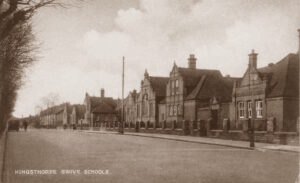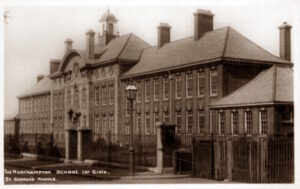
Inside the Elementary Schools
By June 1924, Northampton’s elementary schools taught 12,425 children aged four to fourteen. Attendance was strong, averaging over 11,000 daily.
Thanks to the town’s prosperity, only 15 or 16 children required school meals during the summer of 1924—a strikingly low number compared with many towns.

Secondary Education Expands
Two municipal secondary schools served the community:
- Town and County School for Boys (519 pupils; 208 free places)
- Secondary School for Girls (312 pupils; 171 free places)
The private Notre Dame High School educated 130 pupils, more than half from elementary schools, with 60 non-fee-paying.
Technical Education and the “Time-Off Scheme”
Technical Schools were a major draw, enrolling 784 males and 777 females in 1922–23.
A forward-thinking “time-off scheme” allowed 177 boys and 176 girls aged 14–16 to attend Day Continuation Courses during working hours without losing wages—an arrangement agreed by both employers and trade unions.
Junior courses were free, and successful completion earned a scholarship covering senior courses. The School of Art offered free attendance and attracted 107 boys and 170 girls.
Lifelong Learning: YMCA and Co-operative Movement
The YMCA had about 400 members, each attending one weekly class in subjects ranging from ambulance training to wireless.
The Co-operative Society, with nearly 12,000 members, ran women’s guilds, a choir, a youth circle, and spent £450 annually on educational work. Two Cambridge Tutorial Classes broadened adult learning further.
Read more in this series:
- Researching inequality – Northampton and the Welfare State
- Northampton on the Eve of Change: Life in 1913 and 1924
- Parks, Libraries and Leisure: Northampton’s Social Life in the 1920s
- Schools, Skills and Community: Education in Northampton, 1913–1924
- Work, Housing and Health: Northampton Behind the Numbers (1924)
© Copyright : Graham Ward. All rights reserved.